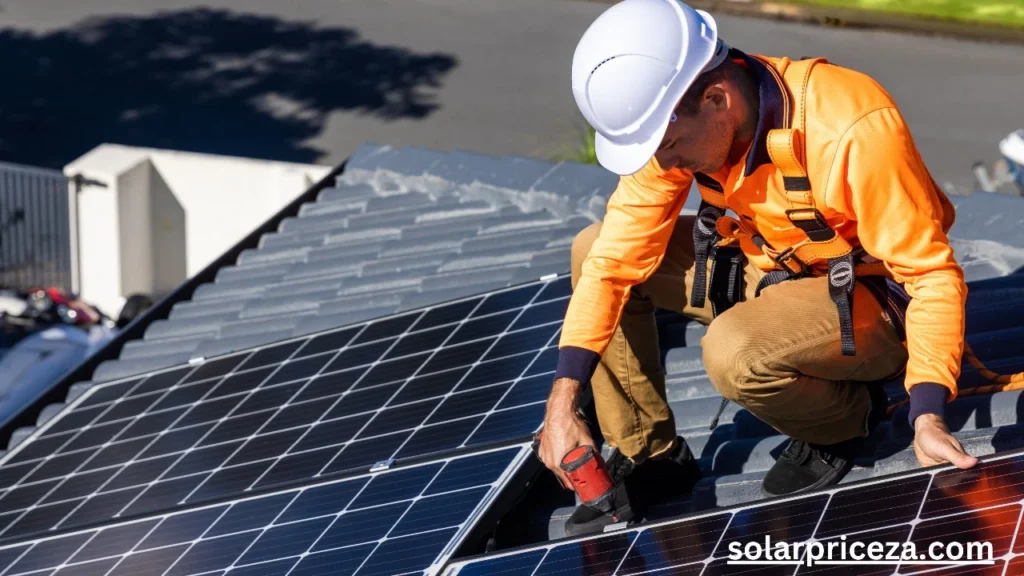In South Africa, the growing demand for sustainable energy solutions has pushed solar lighting to the forefront of urban and rural development. These solutions, which combine environmental benefits with financial efficiency, are transforming the country’s approach to public lighting and infrastructure. Solar streetlights In South Africa have sorted various issues, including load shedding, darkness unsafety, and use in energy production.

The Need for Solar Streetlights
South Africa’s reliance on traditional electricity infrastructure has presented various issues, including load shedding, high energy costs, and the environmental impact of coal-fired energy production. These challenges highlight the need for alternate options, such as solar-powered lamps that function independently of the national grid and use renewable energy sources.
Furthermore, many rural and impoverished communities in South Africa lack proper street lighting, which raises safety issues and limits economic activity after dark. Solar streetlights are an inexpensive approach to providing light to these areas without the need for major electrical infrastructure.
Types Of Solar Streetlights In South Africa
Integrated solar streetlights:
All components (solar panel, battery, light) are in one compact design.
Semi-integrated streetlights:
Separate panels and lights offer flexibility.
Custom systems:
Tailored to meet specific requirements such as brightness, pole height, or design aesthetics.
How Solar Streetlights Work
Solar streetlights In South Africa consist of several components:
- Solar Panels: Convert sunlight into electrical energy, typically using photovoltaic technology.
- Rechargeable Batteries: Store the harvested energy to power the lights during the night.
- LED Fixtures: Provide bright, energy-efficient illumination.
- Controllers: Manage the flow of energy and ensure the lights operate efficiently.
- Sensors: Often included to detect motion or adjust brightness automatically, further conserving energy.
Benefits of Solar Streetlights in South Africa
- Energy Independence: Solar streetlights in South Africa reduce dependency on the national grid and mitigate the impact of load shedding.
- Cost Savings: While the initial investment may be higher, these lights eliminate electricity bills and reduce maintenance costs over time.
- Environmental Impact: By using renewable energy, solar streetlights help lower carbon emissions and reduce reliance on fossil fuels.
- Accessibility: Solar technology enables lighting in remote areas without the need for extensive electrical infrastructure.
- Enhanced Safety: Proper street lighting can reduce crime rates and improve road safety at night.
Cost of solar streetlights in South Africa
Costs depend on specifications like brightness, battery capacity, and type of solar streetlight. On average:
- Small-scale models: R1,500 – R5,000.
- Commercial-grade units: R8,000 – R20,000 or more. Installation costs may be additional.
How long do solar streetlights last?
- LED lights: 50,000+ hours (10-15 years).
- Solar panels: 20-25 years.
- Batteries: 3-7 years (depending on type and maintenance).
Government and Private Sector
Initiatives
The South African government and commercial sector are rapidly seeing the benefits of solar street lighting. Initiatives such as the Integrated National Electrification Programme (INEP) and partnerships with multinational renewable energy companies are accelerating adoption. Local governments have also begun adding solar streetlights to urban development projects, particularly in Cape Town, Johannesburg, and Durban.
Private firms contribute by providing personalized solutions to specific community needs. For example, programs focusing on informal settlements and schools have shown that solar streetlighting can improve safety and extend learning hours.
READ MORE; Solar System For Homes In South Africa
Future Prospects
Solar streetlights in South Africa are likely to accelerate as technology advances and people become more concerned about climate change. Smart lighting solutions, which enable remote monitoring and control, are expected to improve efficiency and reliability even more.
Furthermore, as solar technology becomes more affordable, more communities and governments will be able to participate in this long-term solution.
FAQs
What are solar streetlights In South Africa and how do they work?
Solar streetlights are solar-powered outdoor lighting installations. They include solar panels, batteries, LED lights, and a controller. During the day, the solar panels charge the batteries with sunshine, and at night, the stored energy powers the LED lights.
Are solar streetlights In South Africa suitable for weather?
Yes, solar streetlights are ideal for South Africa because of their ample sunlight. Most systems are built to withstand various weather conditions, such as rain and wind.
Conclusion
South Africa’s reliance on traditional electricity infrastructure has presented various issues, including load shedding, high energy costs, and the environmental impact of coal-fired energy production. These challenges highlight the need for alternate options, such as solar-powered lamps that function independently of the national grid and use renewable energy sources. Types of streetlights are Integrated solar streetlights, Semi-integrated streetlights, And custom systems. Solar streetlights in South Africa reduce dependency on the national grid and mitigate the impact of load shedding. Proper street lighting can reduce crime rates and improve road safety at night.



